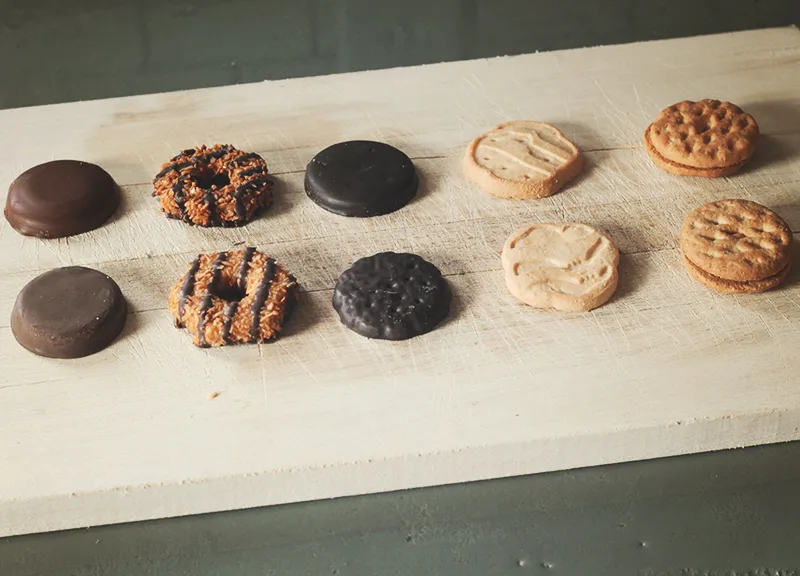
#image_title
#image_title
Meadowlark Organics building a new structure on Ridgeway farm to include test kitchen and two mills to produce their own flour on the farm.
The harvest has begun and the giant grain bins at Meadowlark Organics are filled with oats and winter wheat. On the rolling ridges that surround the bins grow ancient grains like einkorn and spelt ripen, and wild bees buzz in the blooming buckwheat.
You might not recognize the name, but you may have consumed their grain in a baguette baked by Madison Sourdough or sipped it in an Old Fashioned made with La Crosse Distillery rye whisky.
While most of us are familiar with buying local tomatoes or sweet corn from a nearby farm, Halee and John Wepking have a similar goal in mind: They want to be your locally grown grain farmers.
“There is such a disconnect with people about where their flour comes from,’’ said Halee Wepking. “It’s like. ‘What is this white dust, and where does it come from?’”
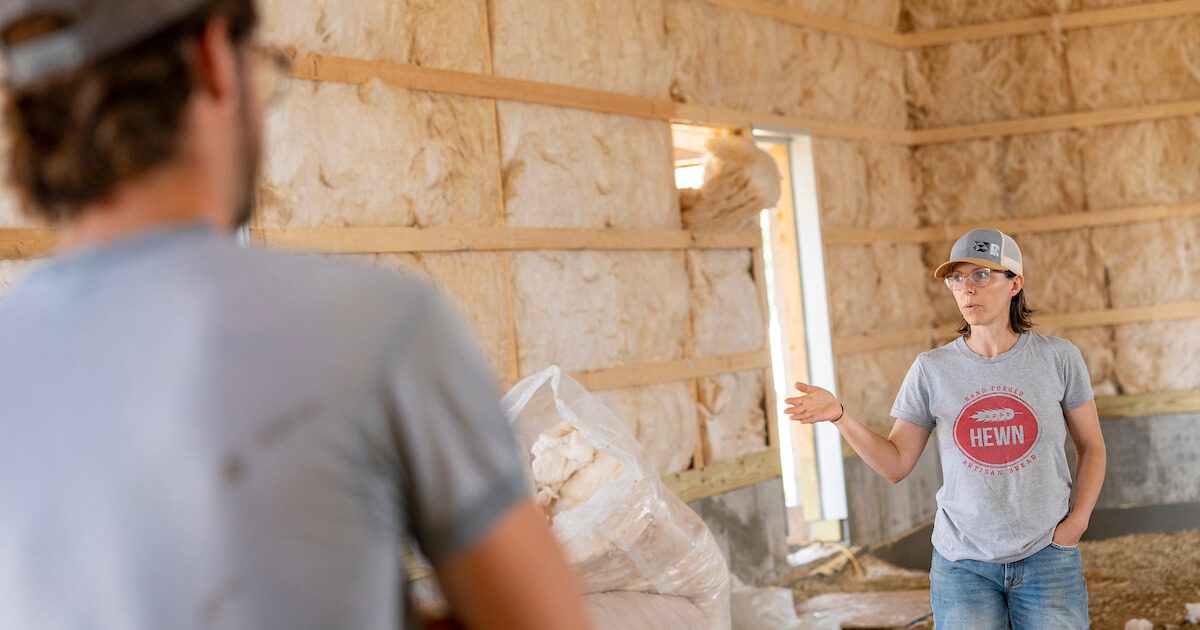
For Meadowlark customers, the flour comes from right here at home.
Home is a 950-acre farm in Ridgeway along Highway 18-151, about 40 miles west of Madison. Paul Bickford had run it for decades as an organic dairy and grain farm. But in 2015, looking to plan his retirement, he advertised for a young couple interested in organic farming.
The Wepkings began their journey to Wisconsin when they met while cooking at Prune, an acclaimed small restaurant in the East Village of Manhattan. They were there in 2011 when owner Gabrielle Hamilton published her award winning memoir “Blood, Bones and Butter,” and won her first James Beard Award. The couple is pictured in the Prune cookbook, which they helped compile.
In 2014, they moved back to John’s hometown of Lancaster, in Grant County, where they ran a restaurant and worked on John’s small family farm on the weekends. But they wanted a place of their own, and when they answered Bickford’s Craigslist ad five years ago, they began buying shares of the farm corporation and working towards that dream.
“Because we came from a culinary background we wanted to grow grain that people can eat,’’ John said.
Most of the corn, soybeans, and hay you see from your car window isn’t being grown for people to eat. It is being grown to feed farm animals. Farmers may plant some winter wheat as a “green manure,’’ and plow it under in the spring to improve soil fertility. Or they may grow oats as a “nurse crop” to protect young alfalfa seedlings.

It wasn’t always this way. Wheat was king when the state of Wisconsin was young. But crop failures brought on by disease and soil destruction led farmers to give up grain for dairy farming.
“People told us you can’t grow wheat in Wisconsin,’’ John said, “And that would be true if our farm was in the river bottom land, where it’s foggy and there’s too much moisture. But up here, with our windswept ridgetop, we can grow wheat.”
The Wepkings and Bickford don’t grow standard varieties of wheat, either. They favor older cultivars such as Red Fife and Turkey Red, and grow open pollinated varieties of corn for their cornmeal.
They also grow heritage varieties of beans and ancient grains — spelt and einkorn — which are lesser known but are more easily tolerated by the gluten sensitive. Their farm rotates crops to preserve soil fertility and is growing a herd of pasture-grazed shorthorns for beef.
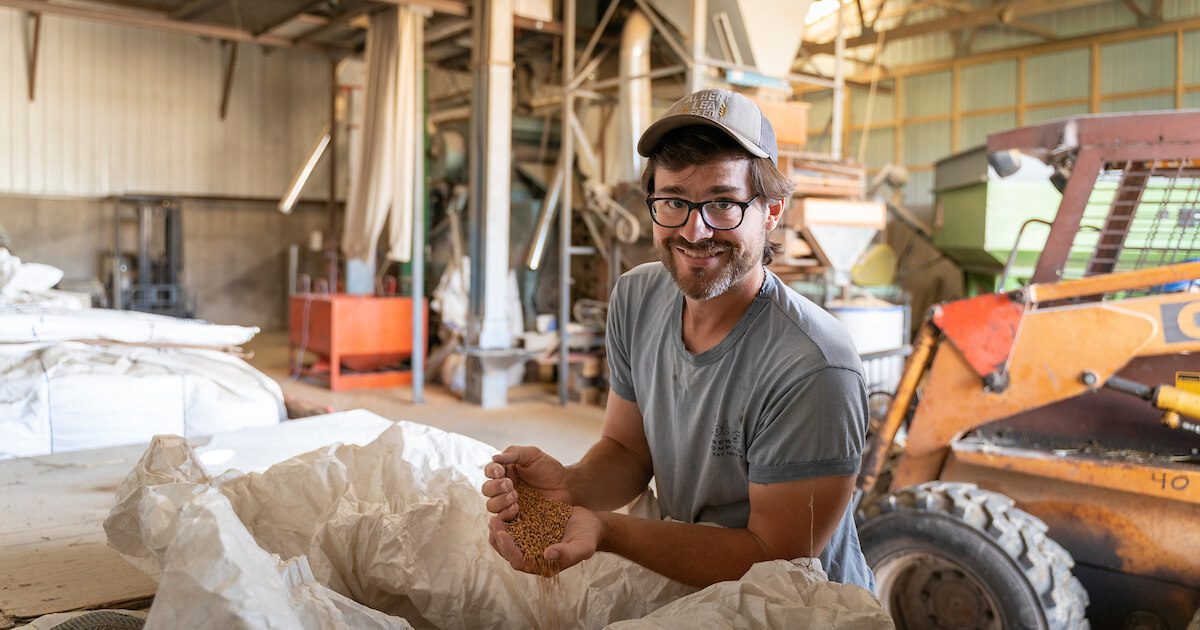
Up until now, the Meadowlark Organics wheat has been “toll milled” at Lonesome Stone mill in Lone Rock. But there’s a new building going up on the farm to house their own mill. Once it’s complete this fall, they plan to buy the equipment from Lonesome Stone owner Gilbert Williams, add a second mill and a test kitchen, and begin milling their own flour on the farm.
This spring the COVID-19 pandemic gave an unexpected boost to their business. When customers went grocery shopping in March and April, they found empty bread aisles, and baking aisle shelves empty of flour and yeast. It might have been the first time many wondered where their flour came from. Halee said a national food blogger included Meadowlark on a list of locally grown grain suppliers, and sales shot up.
“Before COVID, our sales were predominately wholesale, and our mail order (home baker) sales were about $500 a month,’’ says Halee. “In April it was $20,000. It was insane. We were buried in orders.”
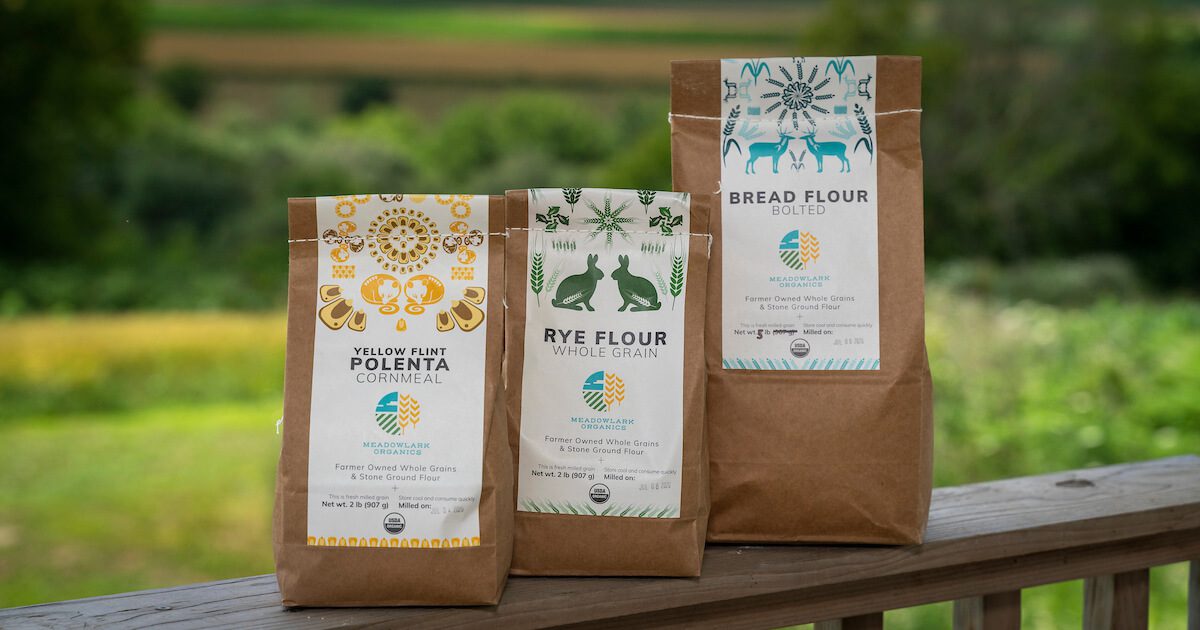
For people who hoarded flour and other grocery commodities during the early days of the pandemic, Halee has a message: “Relax, we’re not going to run out. Our supply chain is very short.”
It doesn’t get much shorter than a grain harvested in the fields surrounding the Wepking’s white farmhouse, cleaned in a fanning mill in their barn, then ground and sifted into flour, right here on the farm.
Politics

The Republican war on Medicare raises the stakes in 2024
Nearly 1.3 million Wisconsinites rely on Medicare benefits—benefits they spent decades paying into, with the promise that the program would be there...

Opinion: Donald Trump’s attacks on abortion rights puts politicians between doctors and their patients
In this op-ed, UW-Madison Medical Student, Charlotte Urban, discusses Trump’s attack on abortion rights and health care, emphasizing the importance...
Local News
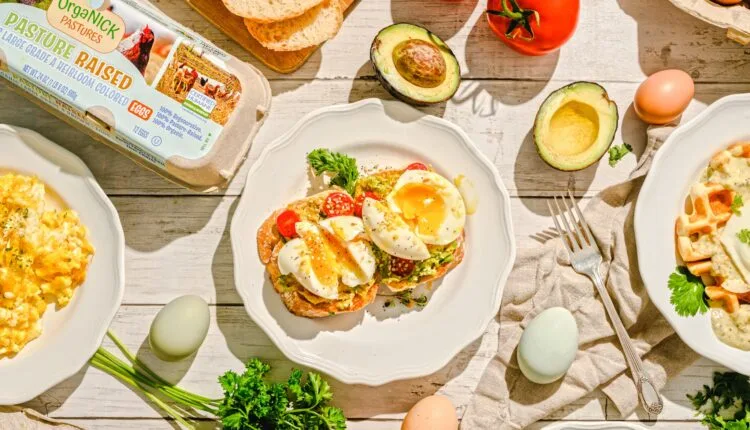
Where to buy farm-fresh eggs in western Wisconsin
There’s nothing better than eggs from a local farm. Of course, they taste fresher and last longer, but the best part is that you’re supporting a...

13 local bookstores every Wisconsin reader should know
Whether you’re sitting outside enjoying beautiful weather or curling up inside during a snowstorm, it’s always a great time to crack open a book....


